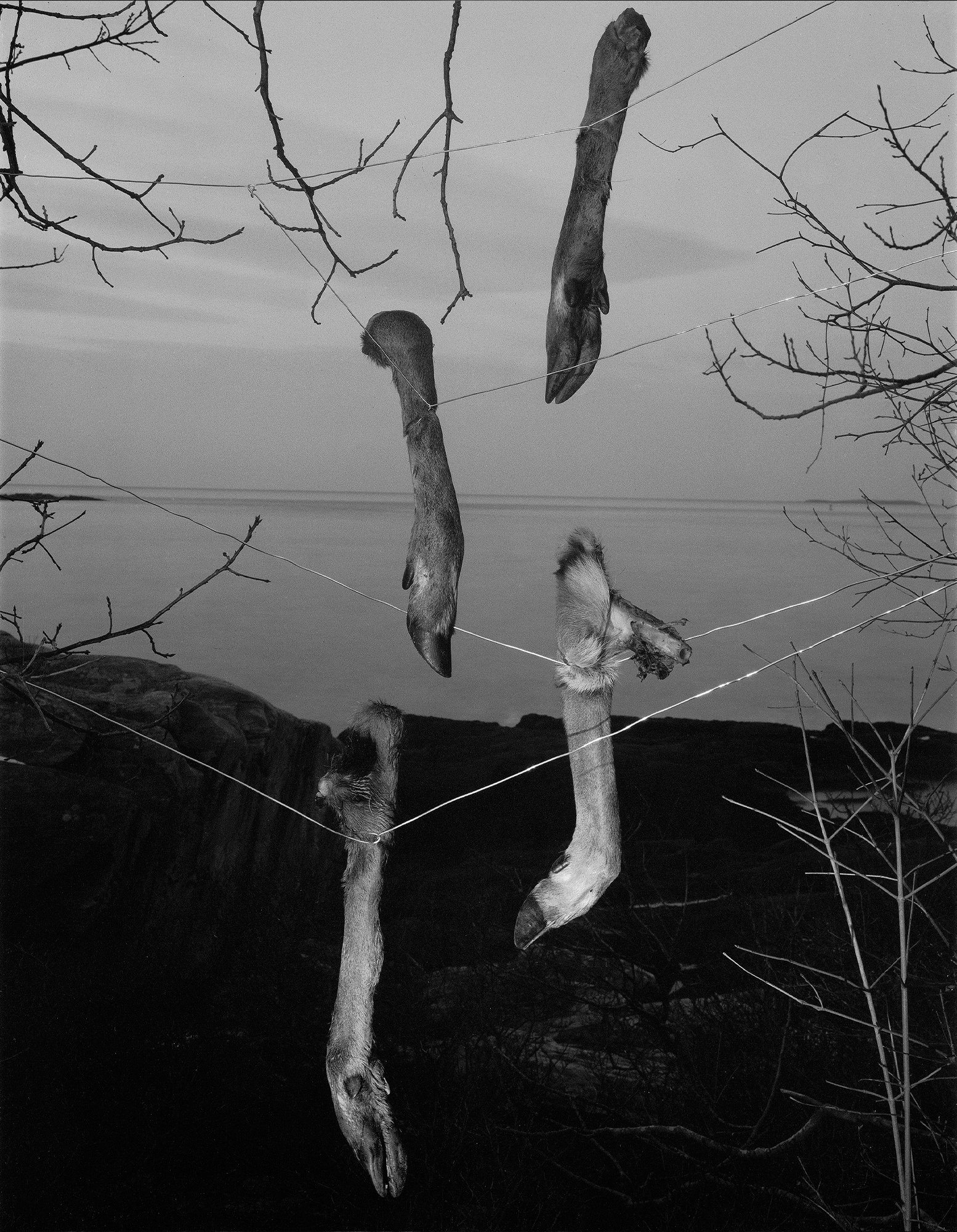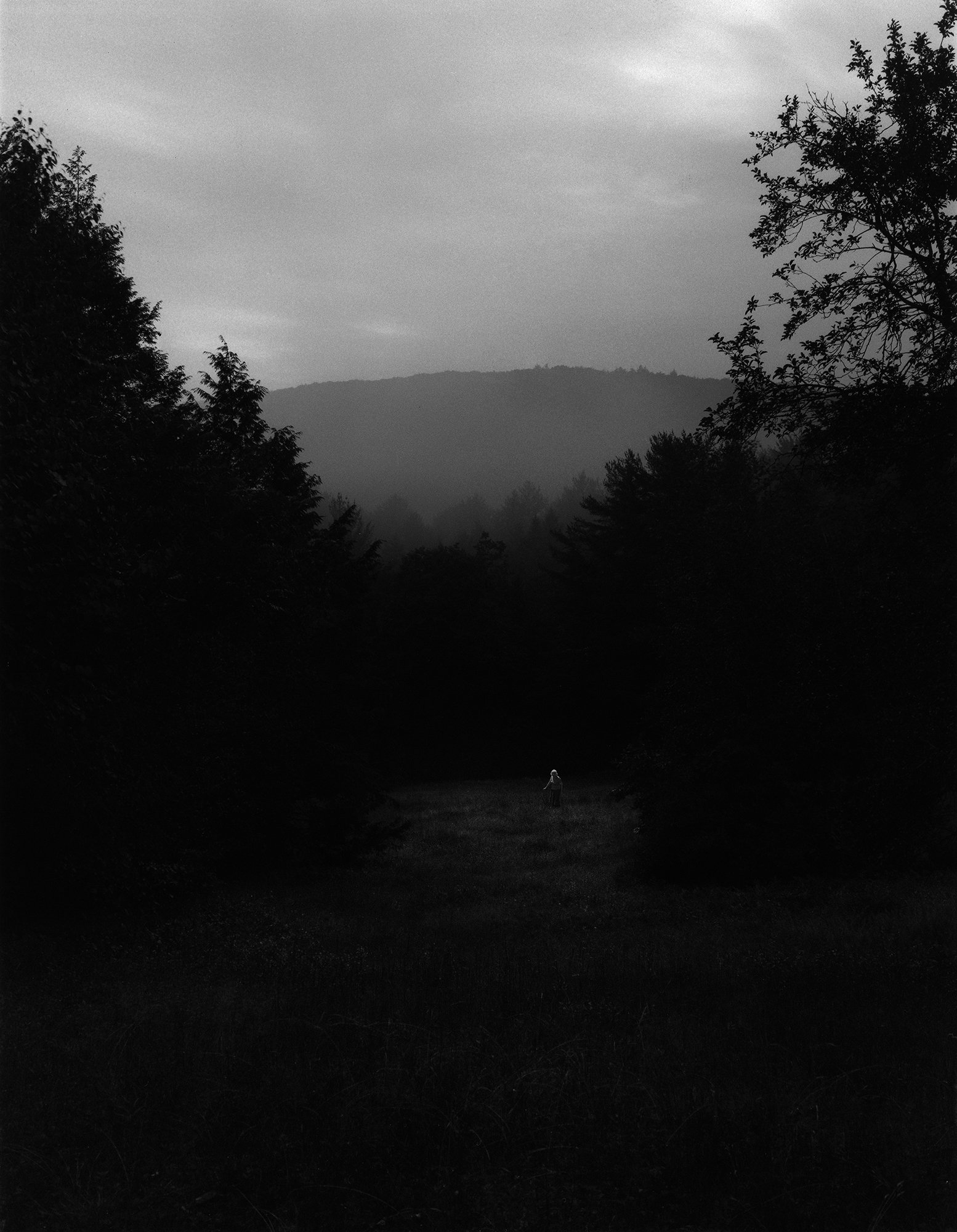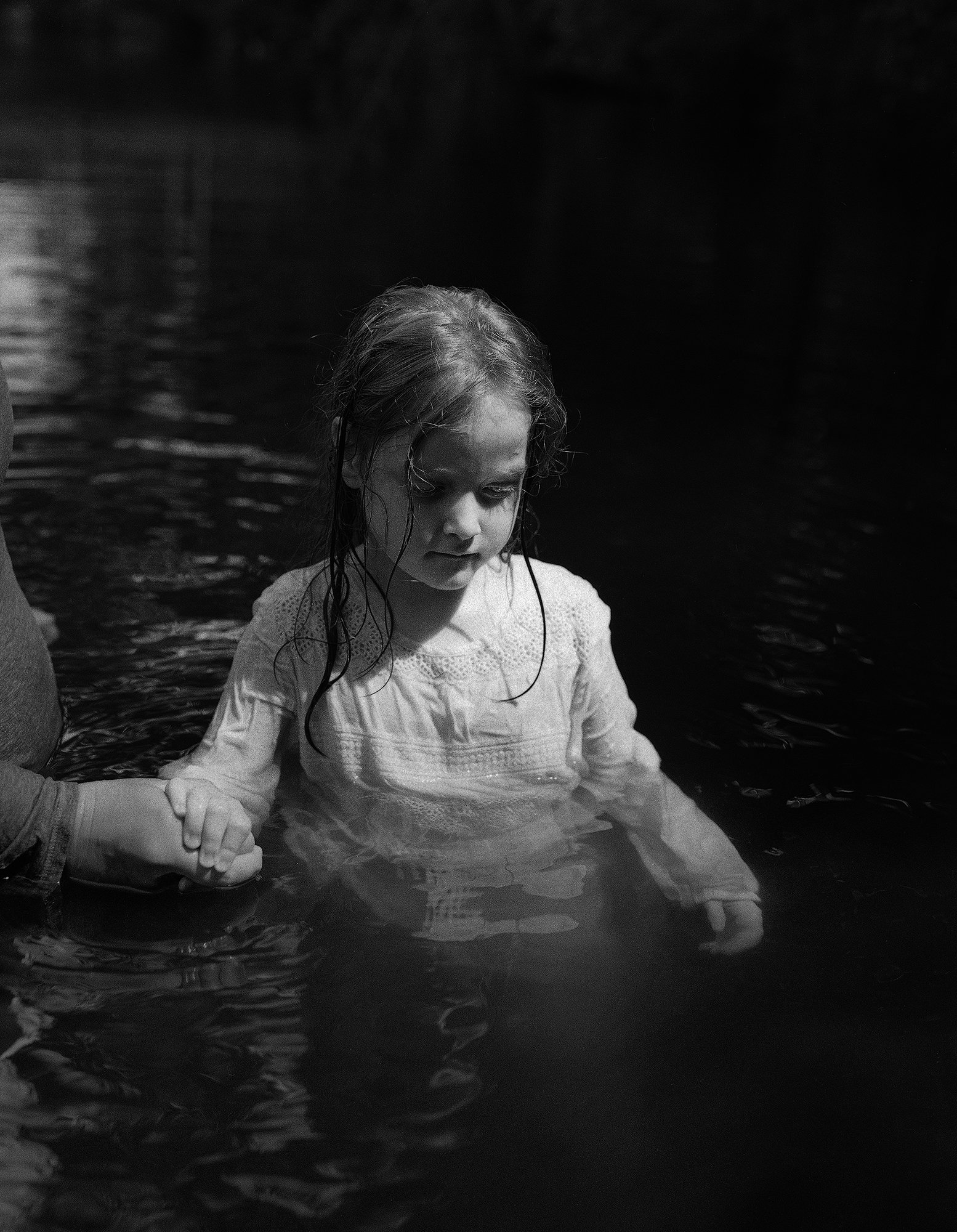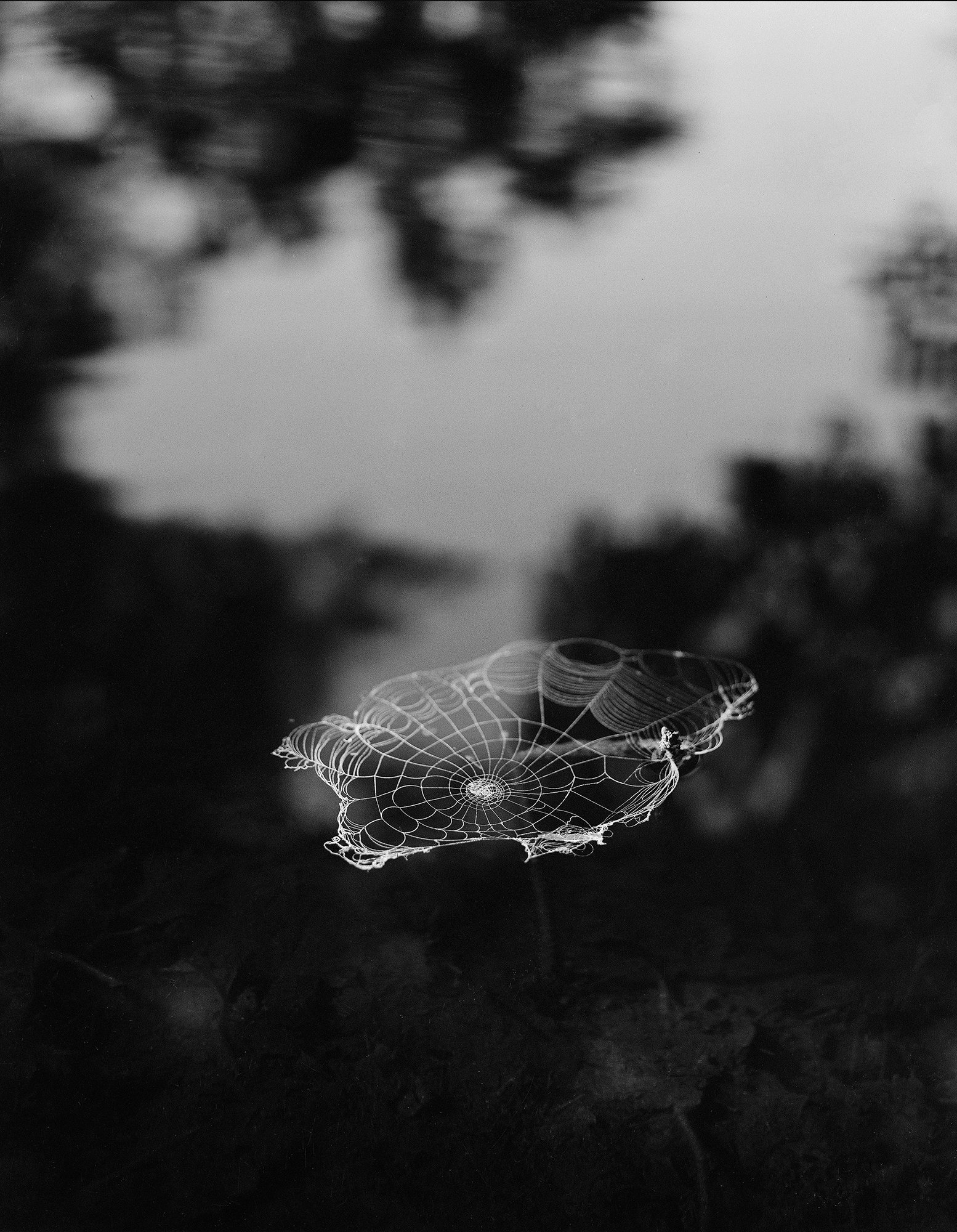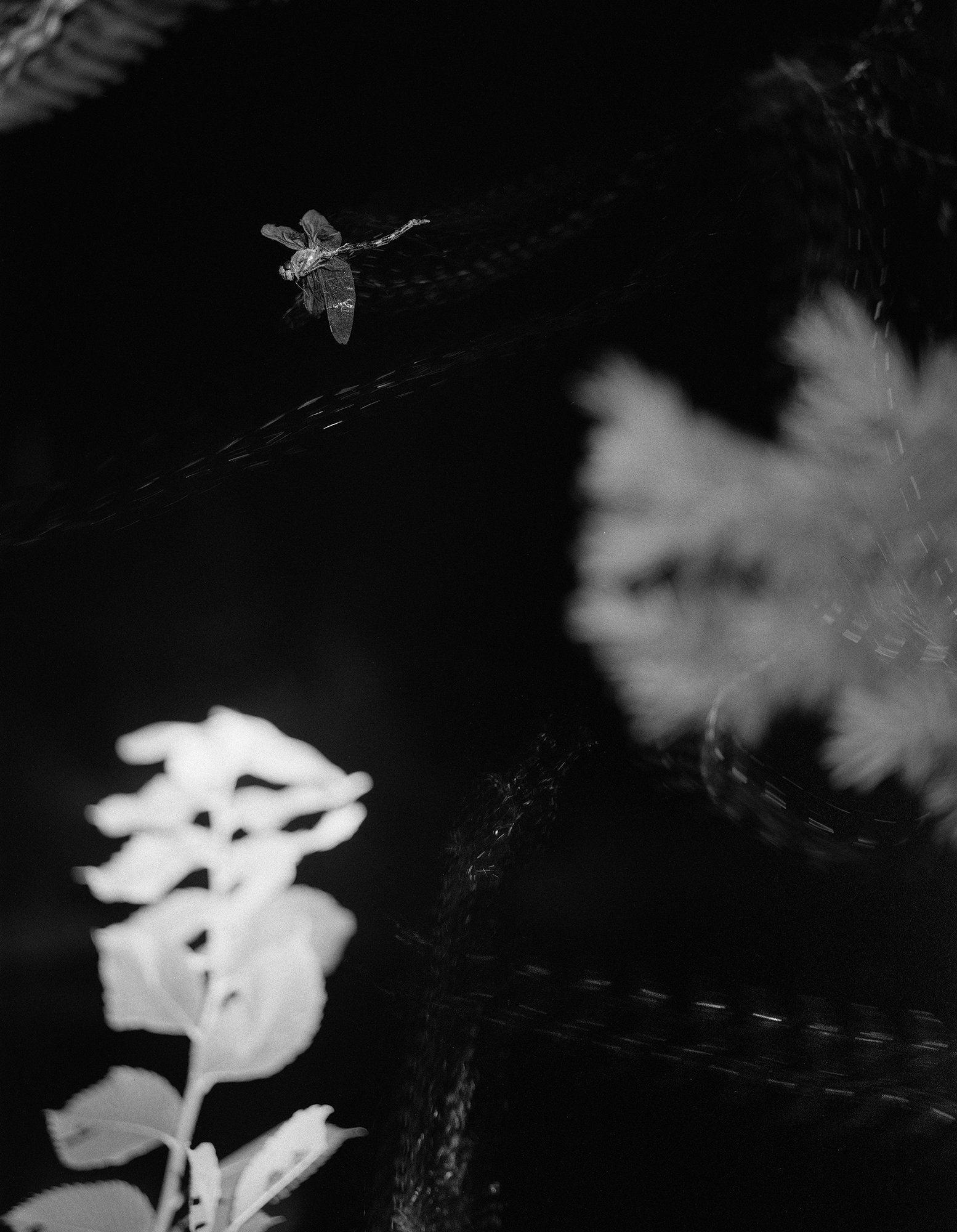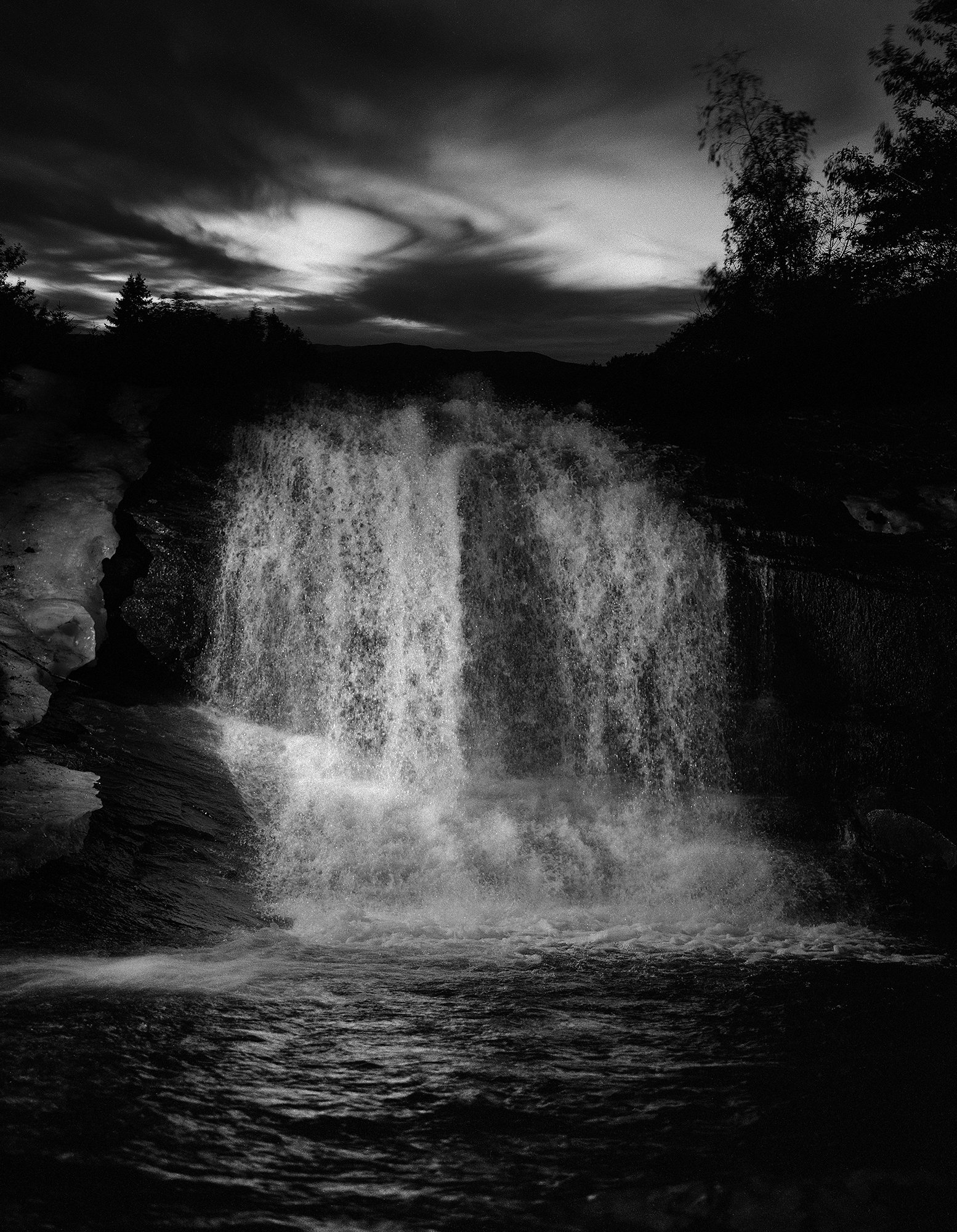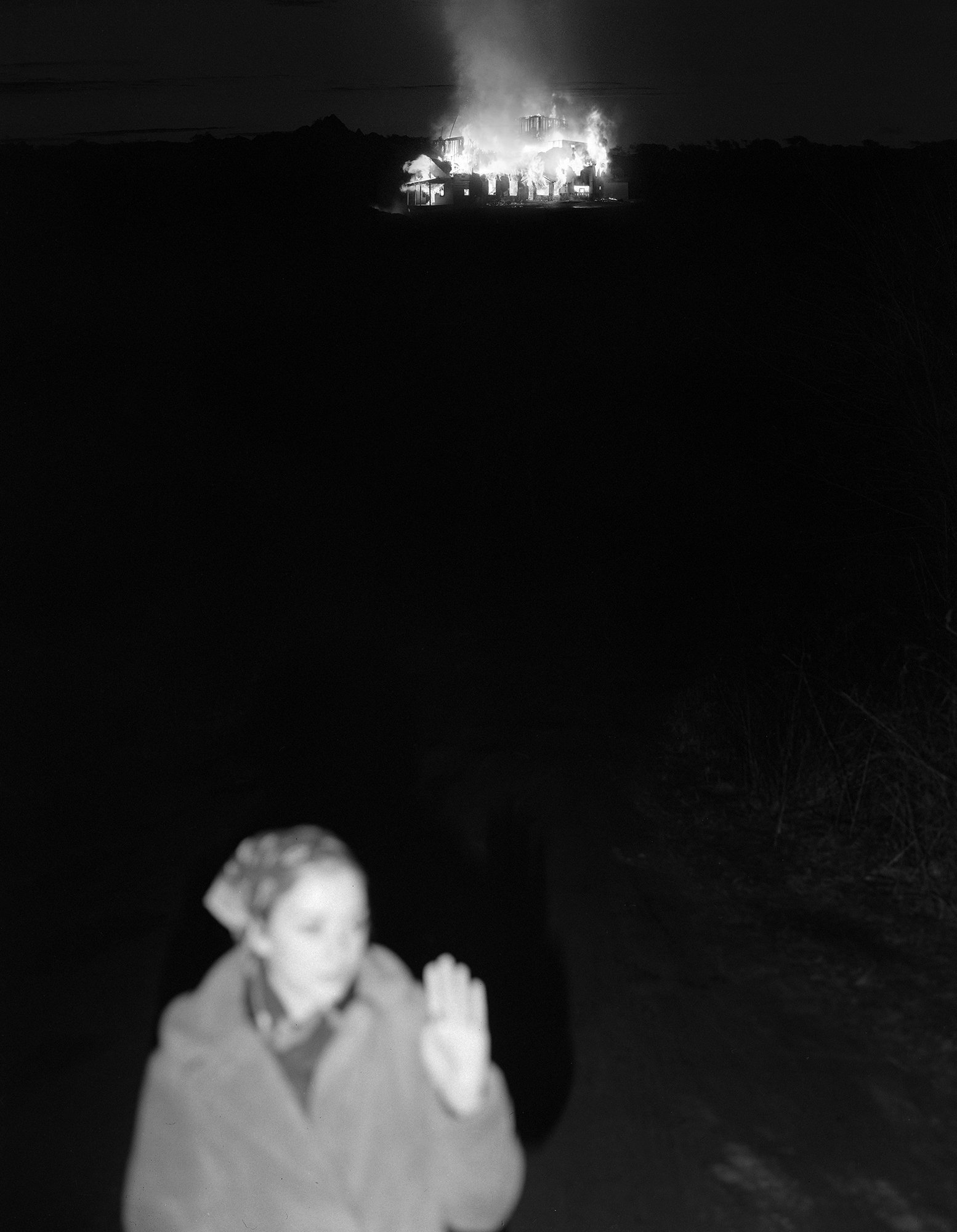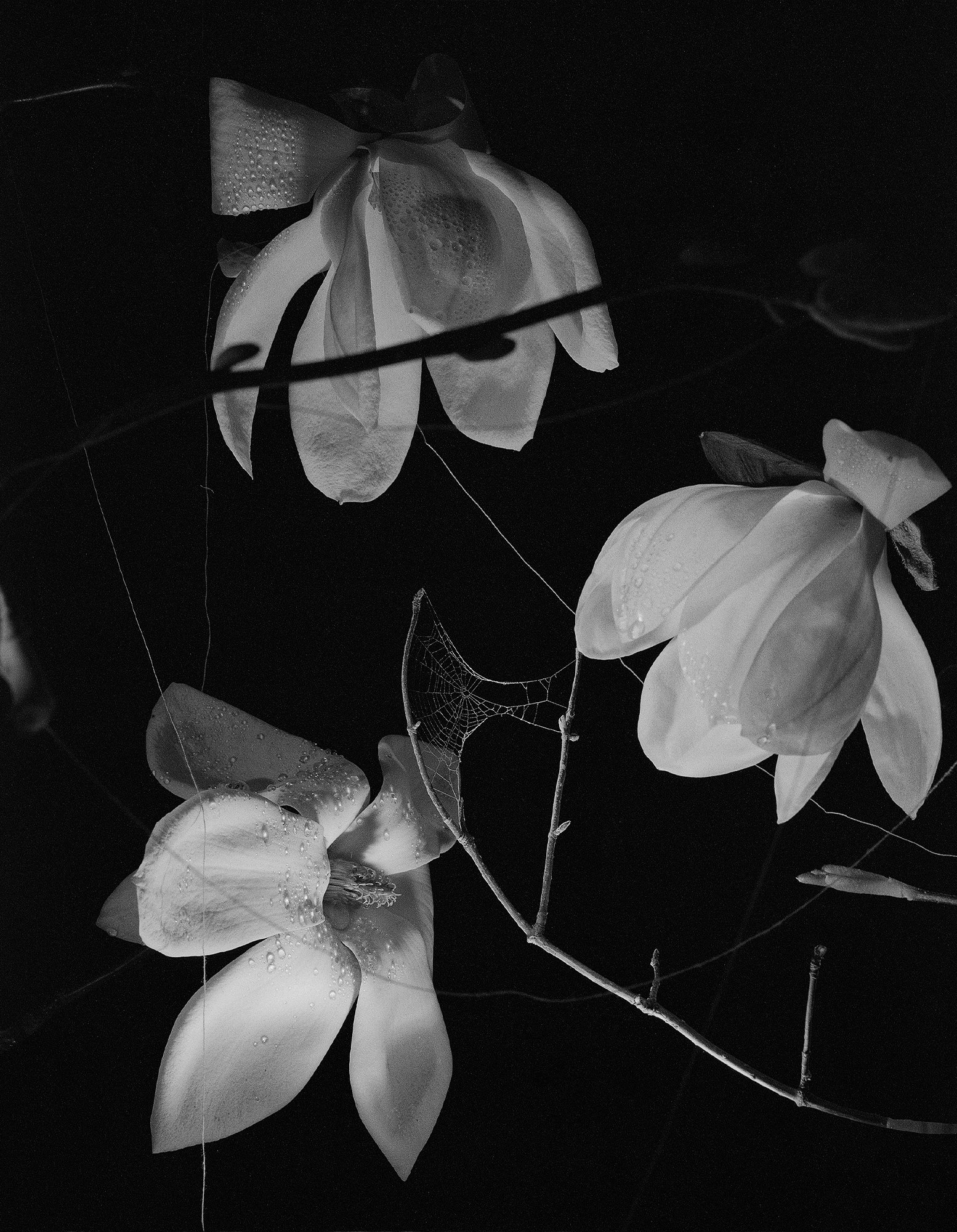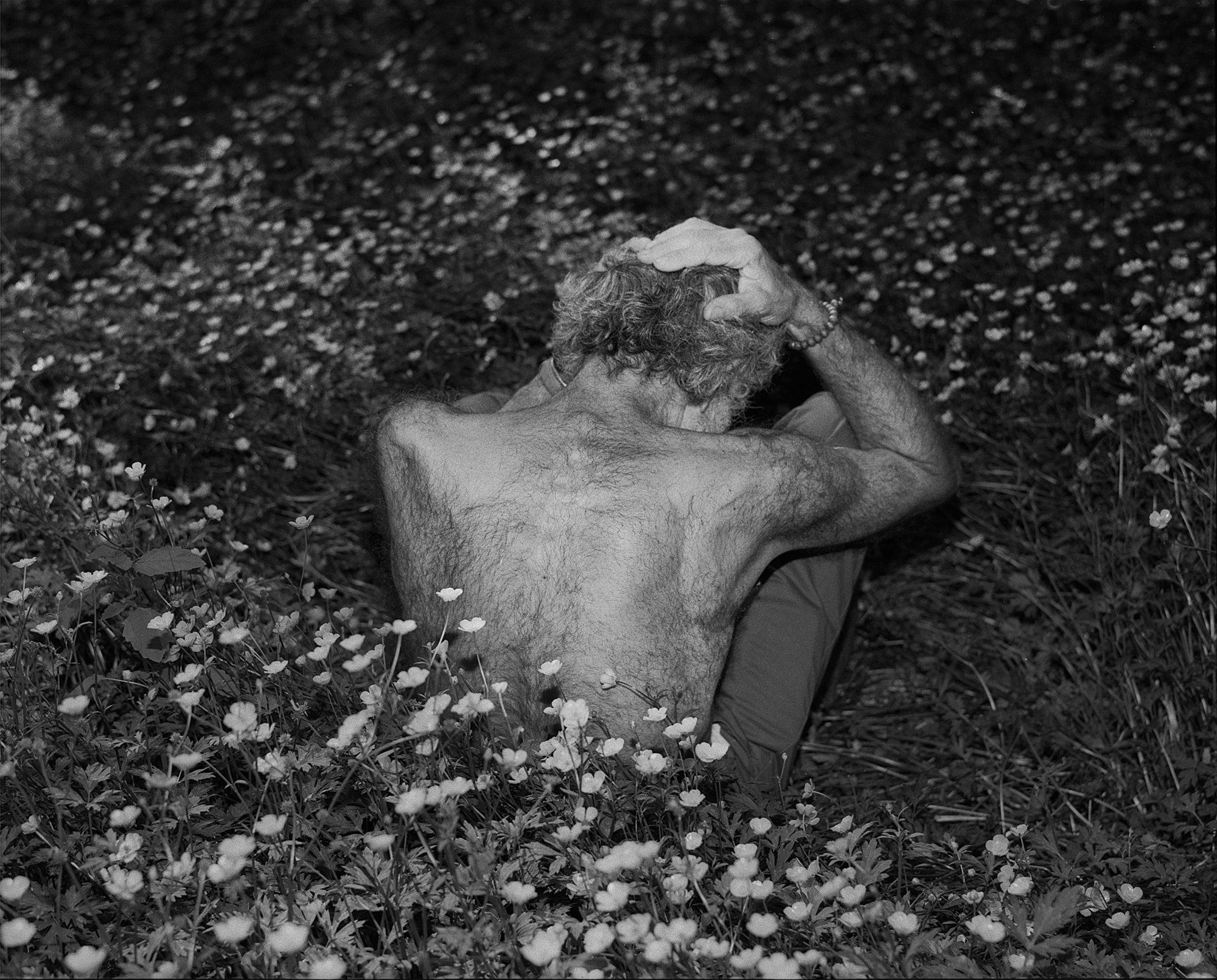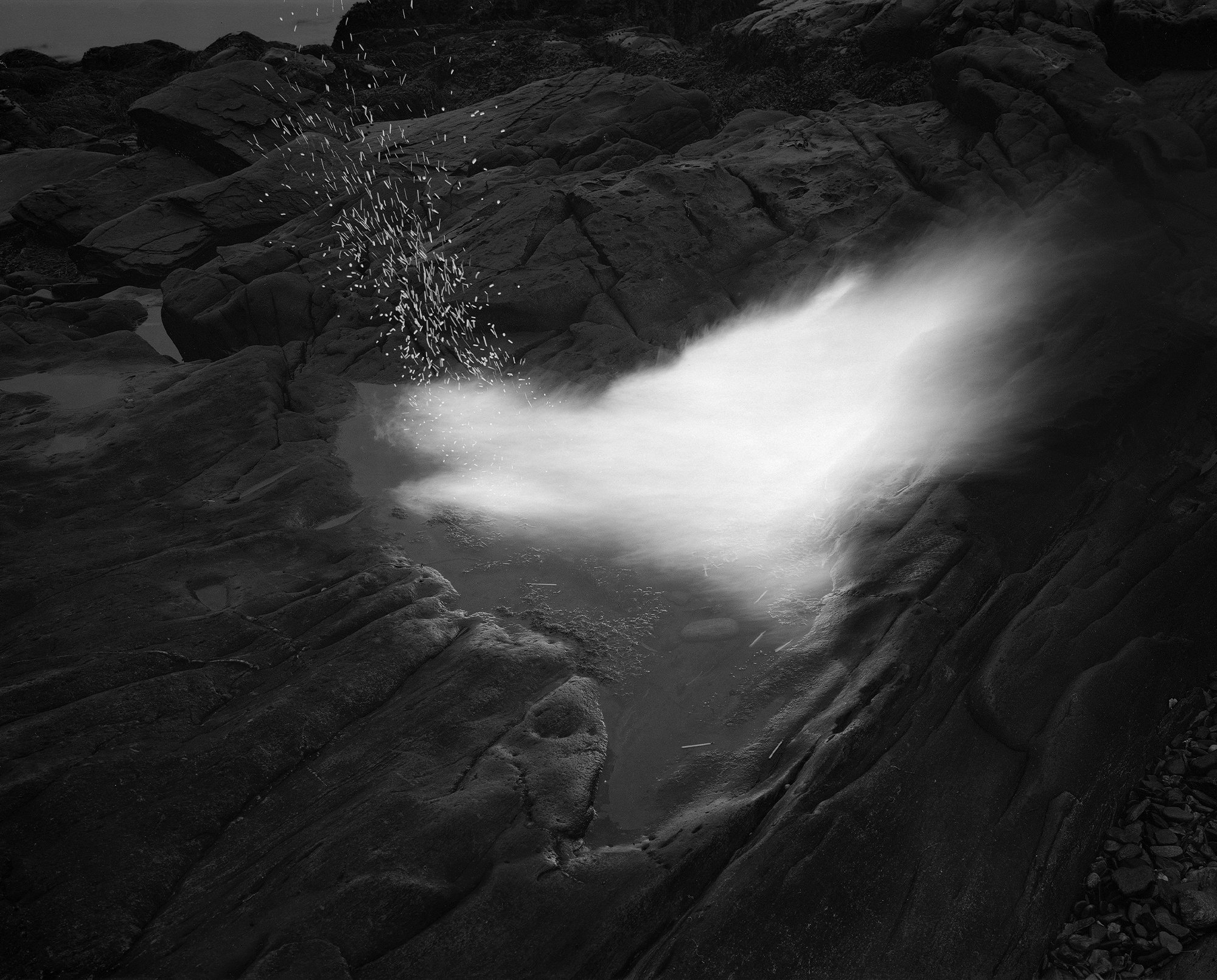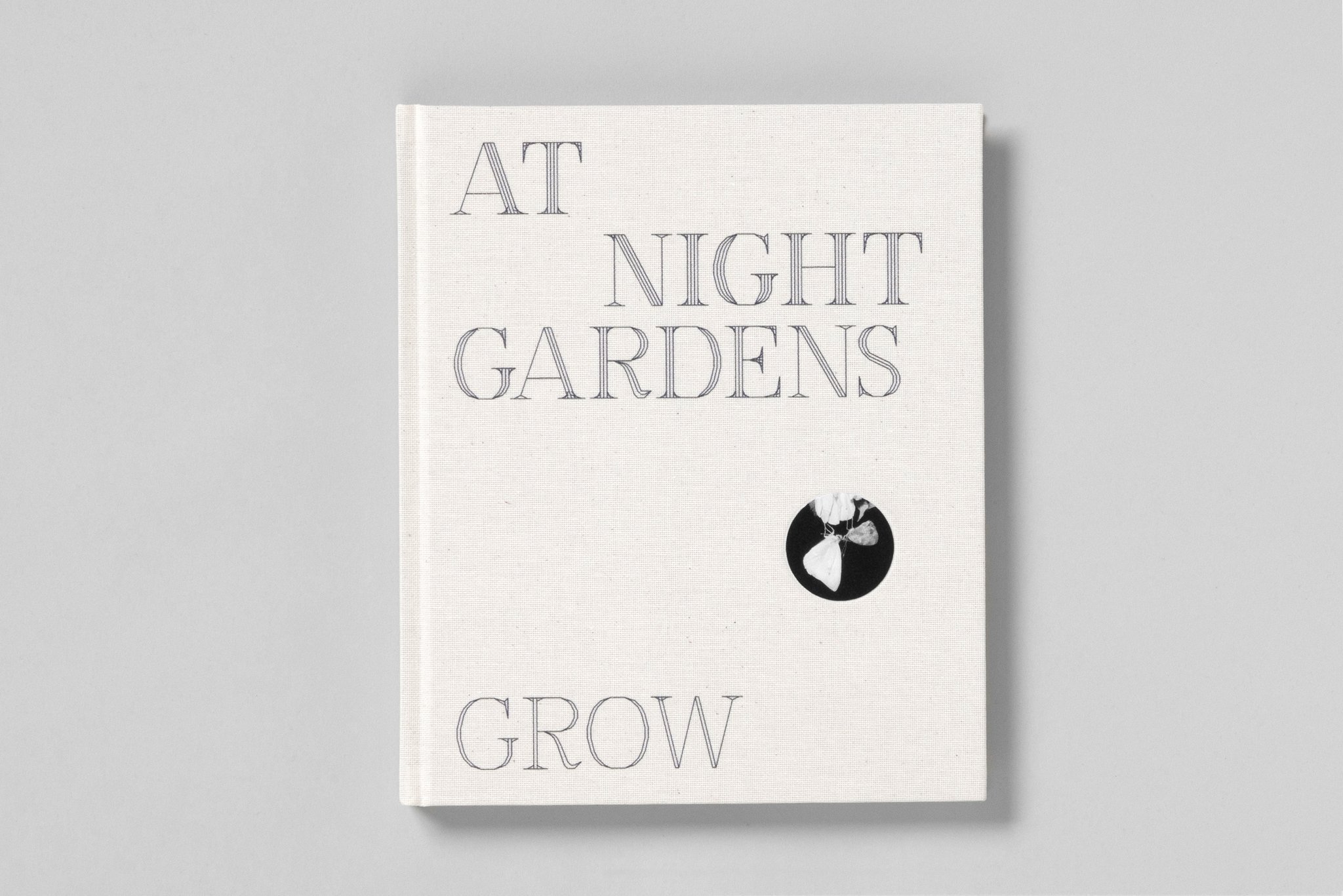Paul Guilmoth: At Night Gardens Grow
Reviewed by
Laura Chen
Published February 1, 2022, 9:57 Am PST
ARTIST
Paul Guilmoth
At Night Gardens Grow
PUBLISHER
Stanley/Barker
Hard back -Silk screen
Size — 250x220
In between dusk and dawn, the world gives rise to darkness. In the dead of the night, emotions and atmospheres are heightened by the intensity of near absence. Lack of light means lack of vision but stimulates vivid dreams and vivacious imagination. We see and hear things that may not be there, and even places that are most familiar to us can change within the murky depths and moonlit shadows. However, this nocturnal interval does not only equate to that which is daunting. Rather, we can liken it to the Chinese philosophical concept of Yin and Yang, which describes the duality of life: how everything is twofold. The opposing forces of “dark and light” prevail the 124 pages of Paul Guilmoth’s most recent publication ‘At Night Gardens Grow’, in which elements of menace melancholy, and blissful hope peacefully co-exist.
When we think of a garden, the conventional image that comes to mind is one on a sunny afternoon, yet the title of this book suggests a different account. Here, the garden — the periphery between the home and the outside world — is depicted at a time when most of us are fast asleep, safely tucked in bed. Using a harsh flash, Guilmoth captures the garden and its surrounding fields in rural New England, and all the flora and fauna that breathe, linger, lurk, creep, and crawl there. Unfurling from the landscape the artist calls home, the transmute hours of the night become a stage for a mystifying tale.
Courtesy of Stanley/Barker
Eerie and spectral in appearance, the black and white photographs feature the land and its inhabitants in an ethereal state, at times as if caught in the midst of some age-old ritual or ceremony. From births to baptisms, funerals, and folklore, a myriad of symbolic and religious references prevail in the work. We see nymph-like women bathing in water and bodies buried underneath layers of soil. A bearded man lies down on leafy and earthy ground, pointing at something outside of the frame. A woman stands by a door opening, bewildered as if sleep-walking. Both are dressed in a delicate white nightgown. Elsewhere, a smoldering fire engulfs a house in such a way that it looks like the whole structure was made from paper and was set alight by just a single spark.
In another, we see a cycle of life, a biorhythm: a tranquil-looking newborn baby surrounded by a circle of mushrooms, presented as a sacrifice or offering for worship of the innocence of youth. We see two children with maturing faces and vacant stares amongst pungent plants, foreshadowing the image of a lonesome man sitting on a bed of flowers, with his hands in his hair, seemingly in a state of despair. We arrive at a predicated realisation: how did we grow up so quickly? The fragility of life is that it comes to us in fleeting moments.
As the boundaries between reality and fantasy are indiscernible, it becomes difficult to tell whether a scene or gesture was found or fabricated. As a result, the viewer is invited to fill in the blanks, bringing their own beliefs to the narrative.
Along with the magical and spiritual, there is also a sense of longing that protrudes from the work. The artist explains: “The photographs have one foot in modern America and the other in a land of the past. Any clear sense of locality is lost in favour of a more fluid and universal language.” In one image we are stood in the middle of an empty road, watching flames appear like clouds of smoke in the shape of lost souls, followed by an image of another impenetrable road with two deer — one stood on either side — drawing us further into the vacuum void beyond. Later, a ladder occupies the inner walls of a cave, resting against the entrance that dwindles to a vanishing point. These are images that offer an escape from reality; a gateway into Guilmoth’s haunting world that is laced with the subtle sentiment of grief and tenderness.
We are carried through the sequence of the book at an apprehensive pace, but according to an observant and deliberate edit, one that flourishes in a poised and palpable way. Though it may feel calm and quiet at times, ‘At Night Gardens Grow’ is never mute: stark bursts and blinding rays of light enter through the gaps of a condensed family of trees and shrubs, revealing buzzing swarms of insects, bats, and birds that fly across the pages. Filled with a bewitching and turmoil energy, the light further illuminates dew and raindrops on spiderwebs that form floating silk constellations between the branches, far and wide. In some images, Guilmoth has captured infinite exposures of stellar skies within the same frame, creating an abundance of corporeal and visceral presence.
Courtesy of Stanley/Barker
Courtesy of Stanley/Barker
From desolate forests to streaming waterfalls and carved rocks — Guilmoth’s allegorical images show the non-permanence of everything around us, and the intrinsic relationship between humans and nature. Though there is no text in the book, a thank you page at the end calls for another layer of understanding. It reads: “For Trula Drinkard-Goolsby (1915-2021).” Evidently, this was someone close to the artist. In their statement, Guilmoth reveals how they decided to centre this photographic study around Trula’s last day spent laying in the field, before she passed away on July 17th. In their own words: “The week before Trula died, she began spending entire days reclined in her field. Her body would be so still we would come up closer to be sure she had not left us. A slight movement of her head chasing a loose swallow, or a finger grazing a plucked blade of grass was enough. Tuesday night she had come into the kitchen after a particularly long 12 hours in her field. Her hair disheveled like a bird’s nest. She looked at a rhubarb stalk on the table and said to us ‘all this time I have never seen the flowers growing, but they are taller every morning.’”
The full story behind Guilmoth’s muse remains a mystery, but regardless of how little we are told, we might read and see her in some of the photographs that commemorate her in a way words never could. The penultimate image in the book features a cave-like passage once more. It is partially lit up by a graceful and heavenly incoming source of light that casts a shadow of a person. A goodbye: the final appearance of Trula, perhaps?
Because of the minimalist blank layout of the book, a recurring motif becomes apparent when we come to its end: spiderwebs. Spread out across several pages, we are lured in like prey. They not only break up the sequence of the work but also act as a metaphor for the overarching message, which is one of potency, endurance, and resilience. More than anything, ‘At Night Gardens Grow’ is an elegy to a queer world and the ubiquitous terrains of identity. It is about the island it was created on, just as much as it is about the worlds and loved ones we carry within ourselves.
Paul Guilmoth (b. 1993) is an American photographer currently based between the UK and New England, USA. They graduated with a MFA in Photography from Maine College of Art in 2015 and co-founded the publication studio Wilt Press. They are focused on bookmaking, photography, and their intersections. Guilmoth’s photographs utilize subtle levels of interference and performance that exaggerate uncertainty over truth while describing a world strangely familiar and palpable. They have had exhibitions globally, including at Leica Gallery London, Aviary Gallery Boston, Red Hook Labs New York, among many others. Most notably, their collaboration in the collection ‘Sleep Creek’ is featured in New York City’s Museum of Modern Art. ‘At Night Gardens Grow’ was released in 2021 and is available for purchase from Stanley/Barker.
Laura Chen is a Dutch image maker and writer based in London, UK. Working within the fields of photography, mixed-media, and found or archival material, her multidisciplinary practice associates a fine art and documentary approach where research, implementation, and intervention are closely intertwined. Recurring themes and interests include identity, memory, tactility, the marginalised, disregarded, and overlooked - whether in everyday objects or groups of people who live and work on the fringes of society. Her work has been featured in and published by British Journal of Photography, Photo London, Lensculture, Canon, PhMuseum, GUP, amongst others. In 2020 she graduated from Birmingham City University with a BA in Photography. She is currently undertaking an MA in Photography Arts at the University of Westminster London.
